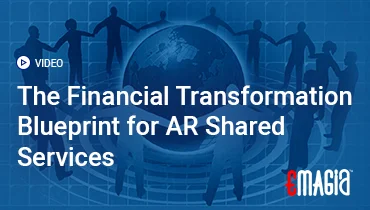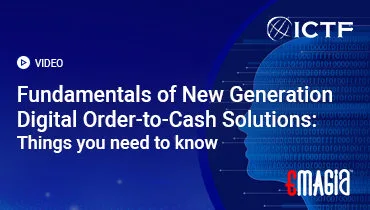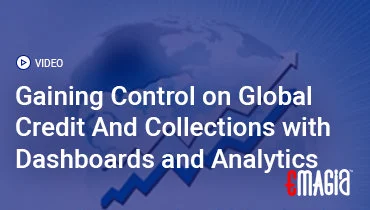In today’s rapidly evolving payment landscape, the reliance on traditional paper checks is steadily diminishing. Businesses and consumers alike are embracing digital solutions for their inherent efficiencies, enhanced security, and sheer convenience. This shift highlights the growing inefficiencies, delays, and security risks that often plague physical checks, from mailing delays to manual reconciliation errors.
This evolving environment brings us to eChecks (electronic checks) – a modern, secure, and cost-effective alternative that leverages the power of the ACH (Automated Clearing House) network. Essentially, an eCheck is a digital version of a paper check, but vastly streamlined for the demands of modern commerce. Many businesses struggle with the complexities of slow payment processing, prohibitively high credit card fees, and the laborious task of manual reconciliation. The good news is that accepting eChecks can alleviate these challenges significantly.
This comprehensive guide is designed to empower you. You’ll gain a fundamental understanding of eCheck payment processing, navigate a clear, step-by-step path to start accepting eChecks, uncover the significant electronic check payment advantages, learn crucial security considerations, and discover how to choose the right eCheck payment gateway or processor. Prepare to revolutionize your payment acceptance strategy and propel your business into a more efficient, secure, and cost-effective future.
Understanding eChecks: What is an eCheck and How it Works
At its core, an eCheck is an electronic version of a paper check. It facilitates the transfer of funds directly between bank accounts over the Automated Clearing House (ACH) network, eliminating the need for physical checks. It’s a digital payment method that offers considerable advantages in terms of speed, security, and cost.
The Role of the ACH Network
The Automated Clearing House (ACH) network is the digital backbone for most electronic fund transfers in the U.S., including eCheck payments. Unlike real-time credit card transactions, the ACH network processes transactions in batches. This batch processing is what contributes to its characteristic processing times but also to its significantly lower transaction costs. It’s important to differentiate: while eCheck vs ACH payments are often used interchangeably, an eCheck is a specific type of ACH payment—typically a one-time debit of funds. ACH encompasses a broader range of electronic fund transfers, including direct deposits (payroll), recurring payments, and business-to-business transactions.
The eCheck Transaction Flow (Step-by-Step)
The process of an eCheck transaction is surprisingly straightforward:
- Customer Authorization: The customer provides explicit permission for the payment. This can be done via an online checkout form (clicking an ‘I agree’ button), a digital signature, a recorded phone call, or a signed paper authorization form. They provide their bank account number, routing number, and the payment amount.
- Initiation by Merchant/Processor: The merchant, or more commonly their chosen eCheck payment processor, securely enters these banking details into their system. This step replaces the physical handling of a paper check.
- Submission to ACH Network: The payment processor bundles the transaction with others and submits it to the ACH network.
- Bank Processing: The ACH network then communicates with the customer’s bank (known as the Originating Depository Financial Institution – ODFI) to request the funds. Once authorized, the funds are transferred to the merchant’s bank (the Receiving Depository Financial Institution – RDFI).
- Settlement and Deposit: After successful verification and processing through the ACH network, the funds are debited from the customer’s account and credited to the merchant’s bank account.
eCheck Processing Times
While electronic, eCheck payments are not instant. Typical processing times for settlement and deposit generally range from 3 to 5 business days. Factors like bank review times, weekends, and public holidays can influence this duration. It’s crucial to manage customer expectations regarding these processing times.
Why Start Accepting eChecks? The Strategic Advantages for Your Business
The decision to start accepting eChecks can bring numerous strategic advantages, positively impacting your bottom line and operational efficiency.
Cost-Effectiveness: Lower Transaction Fees
One of the most compelling reasons to offer eCheck payments is the significantly lower processing fees compared to credit card transactions. While credit cards typically charge a percentage of the transaction value plus a small per-transaction fee, eChecks often come with a flat, nominal fee per transaction. This translates to substantial savings, especially for businesses dealing with high-value transactions or a large volume of recurring payments. Over time, these savings can be immense.
Enhanced Security: Protecting Your Transactions
eCheck security features generally surpass those of traditional paper checks. Transactions are encrypted and often tokenized, meaning sensitive bank account details are converted into a unique, non-sensitive identifier. This reduces the risk of data breaches. Furthermore, the electronic nature minimizes the risk of physical check theft or forgery. Since transactions occur directly between banks over a secure network, it adds another layer of protection compared to card-based payments that pass through more intermediaries. This makes ‘virtual check processing solutions’ inherently more secure than paper-based ones.
Improved Cash Flow and Efficiency
The electronic nature of eChecks eliminates many delays associated with paper checks, such as mailing time, manual deposit processing, and physical check clearing. This means faster access to funds, leading to improved and more predictable cash flow. Integration with accounting software allows for automated reconciliation, streamlining record-keeping and drastically reducing administrative burden and manual handling of payments.
Wider Customer Reach and Inclusivity
Offering eCheck payments expands your payment options, catering to a broader customer base. Many consumers and businesses prefer to pay directly from their bank accounts, and some may not have credit cards or prefer not to use them for large or recurring payments. This provides an inclusive payment method, especially valuable for ‘virtual check processing solutions’ where physical checks are not feasible.
Environmental Friendliness
The paperless nature of eChecks contributes significantly to sustainability efforts. By reducing paper waste and the energy associated with transportation, businesses can appeal to eco-conscious consumers and bolster their corporate social responsibility initiatives.
Suitability for Recurring Payments and High-Value Transactions
The low transaction fees and direct bank-to-bank nature make eCheck payments ideal for recurring charges like subscriptions, rent payments, utility bills, or recurring invoices. They are also exceptionally well-suited for large Business-to-Business (B2B) transactions where credit card processing fees would be prohibitively expensive, making them a cornerstone of efficient ‘eCheck billing’.
A Step-by-Step Guide: How to Start Accepting eChecks in Your Business
Ready to integrate eChecks into your payment offerings? Here’s a detailed roadmap:
Step 1: Understand Your Needs and Choose the Right eCheck Payment Processor
Begin by evaluating your specific business model: Are you an e-commerce platform, do you manage recurring billing, or are you primarily B2B with large transactions? Your needs will dictate the best solution. Research reputable eCheck payment processors or gateway providers that specialize in virtual check processing solutions. Look for competitive pricing, robust security features, excellent customer support, comprehensive reporting capabilities, and seamless integration options with your existing systems.
Step 2: Set Up an ACH Merchant Account
To process electronic bank transfers, you’ll need an ACH merchant account. This is distinct from your regular business bank account. Your chosen eCheck payment processor will guide you through the application and underwriting process. This typically involves providing detailed business information, financial history, and banking details. Strict adherence to NACHA rules (National Automated Clearing House Association) is paramount throughout this setup.
Step 3: Integrate Your eCheck Payment Gateway
This step connects your business’s platform with the payment processor’s system:
- For Online Businesses: Integrate the eCheck payment gateway directly into your website’s checkout process. This often involves using the processor’s APIs (Application Programming Interfaces), pre-built plugins for popular e-commerce platforms (like WooCommerce, Shopify, Magento), or embedding hosted checkout pages provided by the processor.
- For Phone/Mail Orders (MOTO – Mail Order/Telephone Order): If you take payments over the phone or via mail, your processor will typically provide a virtual terminal. This web-based interface allows you to securely enter customer banking details manually.
- For Recurring Billing: Configure your internal system or utilize the processor’s tools to set up and manage automated recurring eCheck payments, ideal for subscriptions or installment plans.
Step 4: Implement Customer Authorization and Verification
Before processing any eCheck payment, explicit customer authorization is mandatory. Common acceptable methods include a digital signature on an online form, a recorded phone call confirming terms, or a signed paper authorization form. Ensure the terms and conditions are crystal clear. Beyond authorization, implement robust verification tools. This includes bank account validation (e.g., micro-deposits, where small amounts are deposited and verified, or instant bank verification services) and optional pre-authorization checks to significantly reduce the risk of returned transactions due to insufficient funds (NSF) or incorrect banking information.
Step 5: Begin Accepting eCheck Payments
Once your setup and integration are complete, you can confidently begin accepting eChecks from your customers. Monitor transactions and reconcile payments efficiently through your payment processor’s dedicated dashboard and reporting tools.
Addressing Challenges and Ensuring Security When Accepting eChecks
While the benefits of eCheck payments are compelling, it’s wise to be aware of potential challenges and how to mitigate them.
Processing Time Considerations
Unlike instant credit card authorizations, eCheck payments are not real-time. Funds typically take 3-5 business days to settle. It’s crucial to manage customer expectations regarding these processing times. Some advanced processors offer faster funding options (e.g., 24-48 hour funding) for an additional fee, which can be beneficial for specific business models or cash flow needs.
Risk of Returns (NSF/Invalid Account)
Like paper checks, eChecks can “bounce” due to insufficient funds (NSF) or incorrect banking information. This is why robust verification tools at the point of entry (Step 4) are critical. You should also have clear internal procedures for handling returned transactions, including notifying the customer, re-attempting payment (if permissible), and understanding any associated fees from your bank or processor.
Security and Compliance for eCheck Payments
Ensuring the security and compliance of your electronic check payment processes is paramount:
- Data Encryption & Tokenization: Always ensure your chosen processor utilizes advanced encryption and tokenization to protect sensitive bank account details both in transit and at rest.
- PCI DSS and NACHA Compliance: Work exclusively with processors that are fully compliant with PCI DSS (Payment Card Industry Data Security Standard) for data security and NACHA operating rules, which govern the ACH network. This protects both your business and your customers.
- Fraud Prevention: Implement and utilize fraud prevention features offered by your processor. These can include real-time bank account validation, cross-referencing against negative databases, velocity checks (monitoring unusual transaction patterns), and other robust measures to mitigate fraud risks inherent in ‘virtual check processing’.
- Employee Access: Limit internal employee access to sensitive customer banking data on a need-to-know basis. Comprehensive access controls and employee training are vital components of a strong security posture.
Emagia: Streamlining Your Path to Seamless eCheck Payment Acceptance
Unlocking Efficient Electronic Payments: Emagia’s Advantage in Accepting eChecks
For businesses looking to modernize their payment acceptance, embracing eChecks offers a powerful combination of cost savings, security, and efficiency. However, navigating the complexities of eCheck payment processing, integrating with existing systems, and ensuring compliance can seem daunting. This is where Emagia steps in as a transformative partner.
Emagia provides comprehensive solutions that simplify how you start accepting eChecks, ensuring a smooth transition and optimized operations. Our platform integrates seamlessly with your existing ERP, billing, and order-to-cash systems, providing a unified view of all payment types, including ‘eCheck payments’. We help you set up and manage your ACH merchant account with robust security protocols, safeguarding sensitive customer data through advanced encryption and tokenization, adhering strictly to NACHA and PCI DSS compliance.
Our intelligent capabilities go beyond basic processing. Emagia’s solutions facilitate enhanced customer authorization and real-time bank account verification, significantly reducing the risk of returned transactions due to insufficient funds or incorrect details. For businesses managing recurring revenue, our system streamlines ‘dunning subscription’ or recurring ‘eCheck billing’ processes, ensuring payments are automatically initiated and tracked. We provide intuitive customer self-service portals where clients can easily provide their banking details and manage their eCheck payments, improving their experience and reducing your administrative burden.
With Emagia, you gain powerful analytics and reporting tools that offer deep insights into your ‘electronic check payment advantages’, processing times, and overall payment acceptance success rates. This enables continuous ‘eCheck optimization’ and strategic decision-making. By partnering with Emagia, you’re not just implementing a payment method; you’re adopting a complete, intelligent financial solution that delivers faster cash flow, lower transaction costs, and a more secure, efficient payment ecosystem.
FAQs: Common Questions About Accepting eChecks
What is an eCheck, and how is it different from a paper check?
An ‘eCheck’ (electronic check) is a digital version of a paper check used for electronic fund transfers between bank accounts via the ACH network. Unlike paper checks, it doesn’t involve physical paper, mailing, or manual processing. This makes ‘eCheck payments’ faster, more secure due to encryption and tokenization, and generally more cost-effective as they eliminate traditional check handling and deposit fees.
How long does it take for an eCheck payment to clear?
Typically, ‘eCheck payments’ take between 3 to 5 business days to fully clear and settle in your bank account. This processing time is due to the batch-based nature of the ACH network. While not instant like some credit card transactions, it’s significantly faster than traditional paper checks and offers lower transaction fees.
Are eChecks more secure than credit card payments?
Many consider ‘eCheck payments’ to be highly secure, often presenting different security advantages compared to credit cards. With ‘eCheck security features’, sensitive banking information is encrypted and tokenized, reducing exposure. Transactions occur directly between banks over a secure network, minimizing intermediaries. While credit cards have strong fraud protection, eChecks avoid the common risks associated with physical card compromise, making them a robust option for ‘electronic check payment’ security.
What information do I need from a customer to process an eCheck?
To process an ‘eCheck payment’, you generally need the customer’s explicit authorization, their bank account number, and their bank routing number. It’s also good practice to collect the account holder’s name and the type of account (checking or savings). A reputable ‘eCheck payment gateway’ or processor will guide you on the specific authorization and verification steps required to comply with NACHA rules.
Can I accept eChecks for recurring payments or subscriptions?
Absolutely, ‘eCheck payments’ are an excellent choice for recurring payments and subscriptions. Due to their low transaction fees, they are often more cost-effective than credit cards for ‘eCheck billing’ models. You can set up automated recurring debits from customer bank accounts after obtaining proper authorization, making them ideal for subscription services, installment plans, rent payments, and more.
What is the ACH network’s role in eCheck processing?
The ‘ACH network’ is the fundamental infrastructure for ‘eCheck processing’. It’s the secure electronic network used to transfer funds directly between bank accounts. When you process an eCheck, your payment processor submits the transaction to the ACH network, which then facilitates the debit from the customer’s bank and the credit to your business’s bank account.
What are the main benefits of accepting eChecks for a business?
The main ‘electronic check payment advantages’ for a business include significantly lower transaction fees compared to credit cards, enhanced security through encryption and direct bank transfers, improved cash flow by eliminating paper check delays, greater operational efficiency through automation, broader customer reach by offering diverse payment options, and environmental friendliness due to their paperless nature.
What are the potential challenges of accepting eChecks, and how can I mitigate them?
Potential challenges include longer processing times (3-5 business days) compared to credit cards and the risk of returned transactions (e.g., insufficient funds or incorrect account info). These can be mitigated by managing customer expectations about processing times, utilizing robust bank account verification tools, and implementing clear procedures for handling returns. Partnering with a good ‘eCheck payment processor’ with strong fraud prevention features is also key.
Do I need a special bank account to accept eChecks?
Yes, to ‘start accepting eChecks’, you generally need to set up an ‘ACH merchant account’ through your chosen ‘eCheck payment processor’. This is a specialized account that allows your business to initiate and receive electronic debits and credits via the ACH network. It’s distinct from a standard business checking account, though funds will ultimately settle into your primary business bank account.
How do I choose the best eCheck payment processor for my business?
To choose the best ‘eCheck payment processor’, evaluate competitive fees, robust ‘eCheck security features’ (encryption, tokenization, fraud prevention), strong customer support, comprehensive reporting, and seamless integration capabilities with your existing systems. Consider their expertise in your specific business model (e.g., recurring billing, B2B) and their adherence to NACHA compliance. A good processor will act as a reliable ‘virtual check processing solution’ partner.
Ready to streamline your payment acceptance and reduce costs?
Conclusion: Empowering Your Business with Electronic Check Payments
In recap, the strategic decision to start accepting eChecks offers a compelling array of benefits that directly address many modern business challenges. From significant cost savings derived from lower transaction fees to the enhanced security features that surpass traditional paper checks, and from improved operational efficiency through automation to an expanded reach to a wider customer base, eChecks are proving to be an indispensable payment method.
In today’s dynamic digital economy, offering diverse, secure, and efficient payment options like eChecks is no longer just a convenience; it’s a strategic imperative. It empowers businesses to optimize their cash flow, reduce administrative burdens, and elevate customer satisfaction by providing flexible and preferred payment alternatives. The shift away from paper checks towards seamless electronic check payment processing is not merely a trend—it’s a fundamental evolution in financial management.
We strongly encourage businesses to explore robust eCheck solutions to modernize their payment acceptance infrastructure, significantly reduce operational costs, and secure a more agile and profitable financial future. The journey to efficient, secure, and customer-friendly electronic check payment processing truly begins now.



